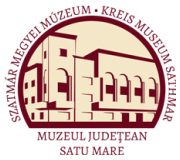Marta, Livius et al.: The Late Bronze Age Settlement of Nyíregyháza-Oros „Úr Csere” (Satu Mare, 2010)
VIII. Conclusions. Nyíregyháza-Oros site and its significance for the reearch of the Late Bronze Age
between the two phases. Some elements of chronological segregation between the sites can be assumed, based on the principle that older materials preserve more pregnant the Otomani pottery traditions and the latest ones contain elements specific for the cultural manifestations subsequent to the cultural group Hajdfibagos-Cehăluţ, respectively discoveries of pre-Gáva and Lăpuş II-Gáva I type. In this regard, a comparative analysis of the vessels’ shapes and decorations show the existence of some differences between the pottery found at Oros and some Hajdfibagos-Cehăluţ sites containing earlier elements. Although Oros is the largest processed ceramic lot of the Hajdfibagos-Cehăluţ group, there are no incised lines filling the triangular areas flanking the spaces between arches identified. The ornament is present in several sites on the upper flow of Crasna and Barcău323, in Sătmar324 and Hajdfi-Bihar325. One can notice that for those archaeological sites where this ornament appears, there are also additional dating arguments placing them during the early stage of the development of the Hajdfibagos-Cehăluţ cultural group. It is the case of the settlements at Otomani-„Cetatea de pământ” and at Pişcolt-„Nisipărie”, where bronze pieces were discovered (needle with seal-shaped head, horseshoe-shaped pendant) which are dated mainly during the middle and evolved Tumuli period326. As regards the dating of the settlement of Pişcolt in an early phase of the Hajdfibagos-Cehăluţ cultural group, a confirmation is provided by numerous ceramic imports with decorations typical for the Suciu de Sus Ila phase327. The perpetuation of some Otomani traditions and relatively sporadic occurrences of elements specific for the Tumuli culture in the settlements of Körösszakál-„Gál tanya” and Körösszegapáti-„Pál-lapály” made them to be included in the early stages of the Hajdfibagos-Cehăluţ group, being dated during the RBB2-BC period328. In the cemetery of Hajdfibagos-”Daraboshegy”, dated during the RBC329 phase, the Otomani tradition is less obvious while the Tumuli elements are already striking. The ceramic material from the settlement of Nyíregyháza-Oros has much in common with some of the vessels from the cemeteries with cremation in urns from Berkesz-’’Csonkásdűlő” and Demecser-”Borzsovapuszta”. None of the mentioned ne-323 Bejinariu-Lakó 2000, p. 169 (Crasna); Bejinariu-Lakó 1996, Pl. III/l; IV/4 (Cehei). 324 Németi 1978, Pl. 1/1, 7/8-9 (Andrid, Pişcolt); Kacsó 1997, Pl. VI/1,4, VII/9 (Acâş). 325 L. Nagy 2007, Pl. II1/4-6, VI/2-5, X/4,7, XIII/5,8. 326 Kacsó 1997, p. 88. 327 Marta 2009, p. 96-98. 328 Nagy 2007a, p. 35. 329 Kovács 1970. 66
